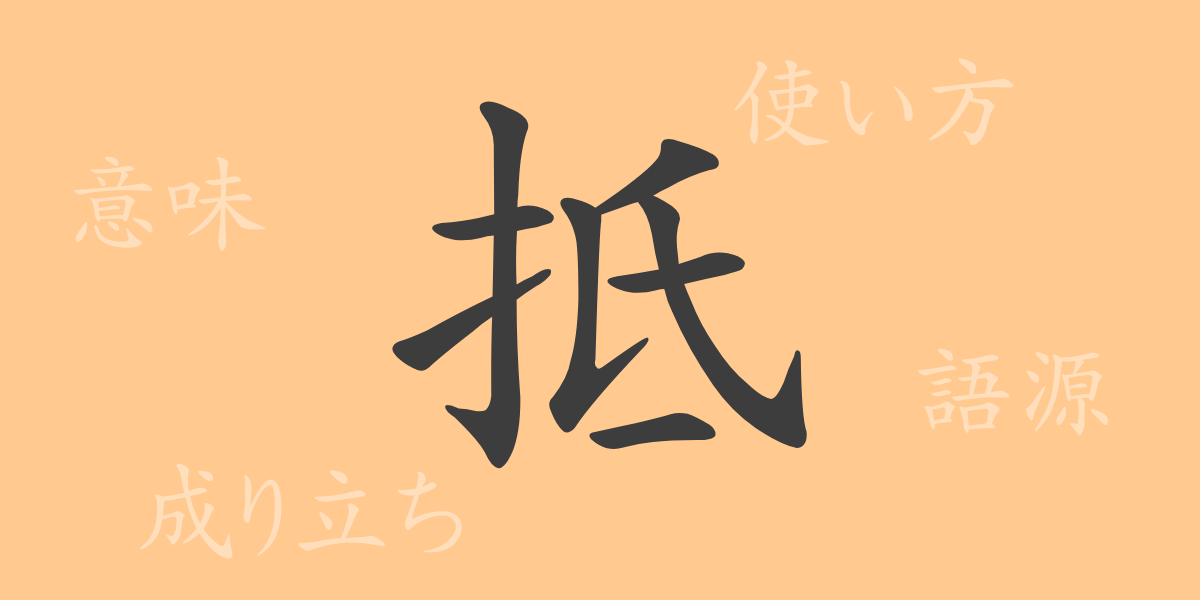Japanese language possesses numerous kanji, each with its unique history and meaning. Today, we spotlight ‘抵(てい)’, a commonly used kanji, delving into its origins, modern usage, and its role in everyday life. Understanding the richness of this character can enhance our mastery of language across daily conversations, business contexts, and even literary works.
Origins of ‘抵(てい)’
The kanji ‘抵’ originated in ancient China, initially depicting the action of pressing one’s hand against something, leading to meanings such as ‘resist’ or ‘to touch’. Composed of ‘扌'(てへん), signifying ‘hand’, and ‘氐'(てい), indicating sound, ‘抵’ evolved to symbolize physical contact or metaphorical opposition and resistance.
Meaning and Usage of ‘抵(てい)’
‘抵’ primarily conveys meanings like ‘to resist’ or ‘to mortgage’, used extensively within legal and financial contexts. It appears in terms like ‘抵抗する’ (to resist) and ‘抵当に入れる’ (to mortgage). ‘抵’ can also carry a negative nuance, as seen in ‘抵触する’ (to conflict), describing actions contrary to laws or regulations.
Readings, Stroke Count, and Radical of ‘抵(てい)’
The kanji ‘抵’ is frequently used in Japanese, making it essential to understand its readings and structure:
- Readings: On’yomi is ‘テイ’, Kun’yomi is ‘さからう’.
- Stroke Count: ‘抵’ consists of 9 strokes.
- Radical: The radical is ‘扌’ (てへん), related to actions involving the hand.
Phrases, Idioms, and Proverbs Using ‘抵(てい)’
Numerous idioms and phrases incorporate ‘抵’, each reflecting deep aspects of the language. Examples include:
- 抵抗(ていこう): To oppose pressure or force.
- 抵当(ていとう): To provide property as collateral.
- 抵触(ていしょく): To act against laws or rules.
- 抵抗力(ていこうりょく): The body’s defense ability against diseases.
These terms are frequently employed in everyday life and business scenarios.
Conclusion on ‘抵(てい)’
The kanji ‘抵’ embodies concepts of contact and opposition, finding usage across various contexts. Understanding its readings, stroke count, and radical can deepen comprehension of Japanese. Additionally, idioms and phrases featuring ‘抵’ help express complex ideas effectively. For learners of Japanese, knowing the background of such kanji can enhance appreciation of the language’s richness.

























